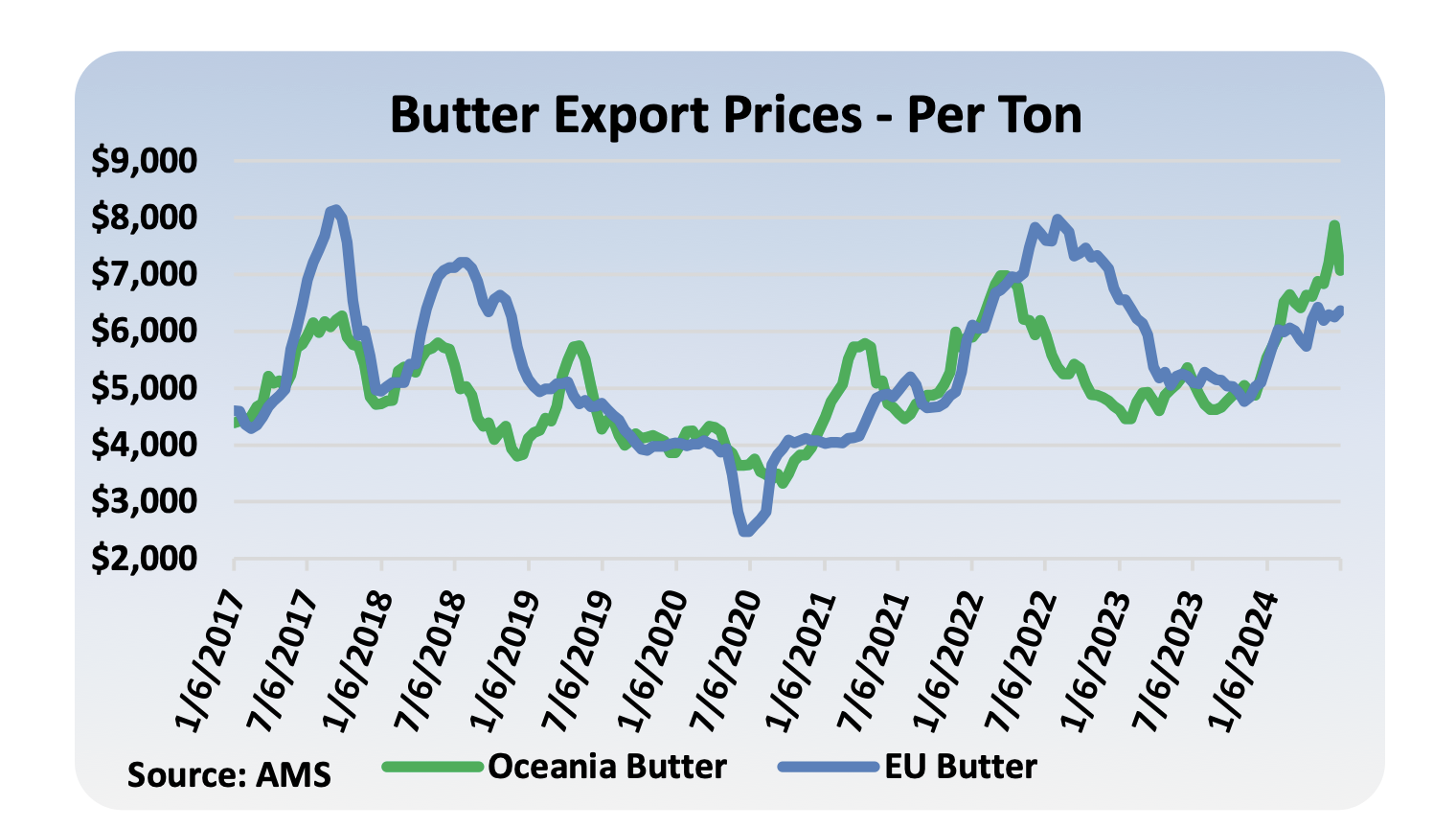



EU butter production expected to decline 1% in 2024
The decline is attributed to constrained milk suppliesIn 2024, butter production in the European Union (EU) is expected to decrease by just over 1% from the previous year, according to a recent USDA Dairy World Markets and Trade report. This decline is attributed to constrained milk supplies, which has led dairy processors to prioritise cheese production with higher returns over butter and non-fat dry milk (NDM).
The trend of decreasing butter production was already evident in the first few months of 2024, reflecting a 4% drop compared to the same period in 2023. Germany, France, Ireland, Poland, and the Netherlands, which collectively account for around 75% of EU butter supply, are all expected to experience declines in production.
EU domestic consumption of butter is forecast to continue its downward trend in 2024, driven by health concerns and shifting consumer preferences. The preference for plant-based spreads and oils, particularly in Mediterranean countries where olive oil is traditionally used is contributing to the reduced consumption of butter. As a result, the total domestic consumption of butter is projected to decrease by 3% compared to 2023 levels.

EU butter exports are expected to decline in 2024, primarily due to reduced production and increased competition from other global exporters. While there was a significant rise in butter exports in 2023, driven by favourable prices and the need to sell off industry stockpiles, this trend is unlikely to continue. Early 2024 data already
indicated a slight drop in exports, down 4% year over year through May, and this decline is expected to persist throughout the year with exports forecast at 280,000 tons.
The EU’s primary export markets for butter include the United Kingdom, the United States, Saudi Arabia, China, and South Korea. However, with tightening stocks and higher farm-gate milk prices making EU butter less competitive on the global market, export volumes are anticipated to shrink.



